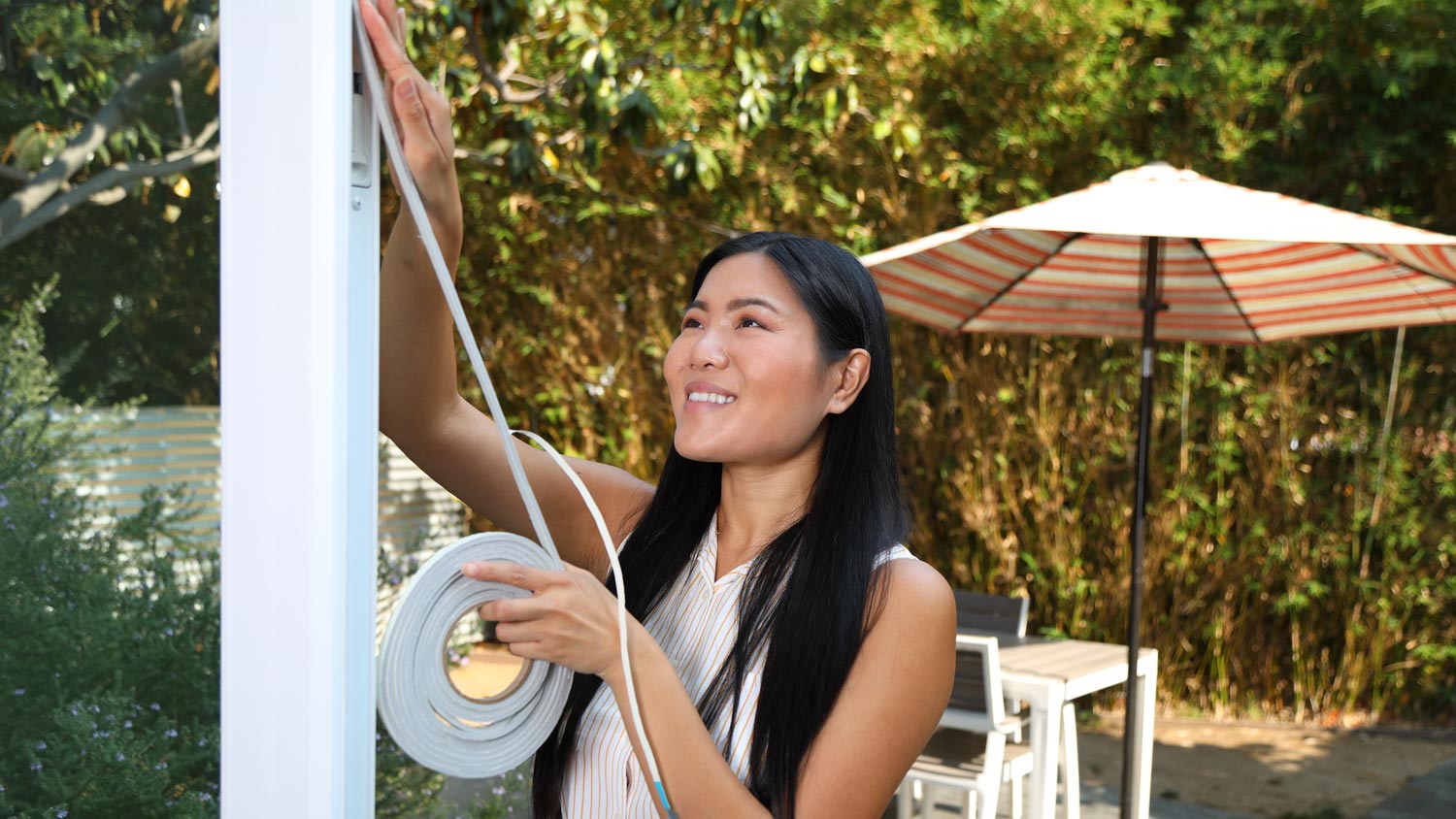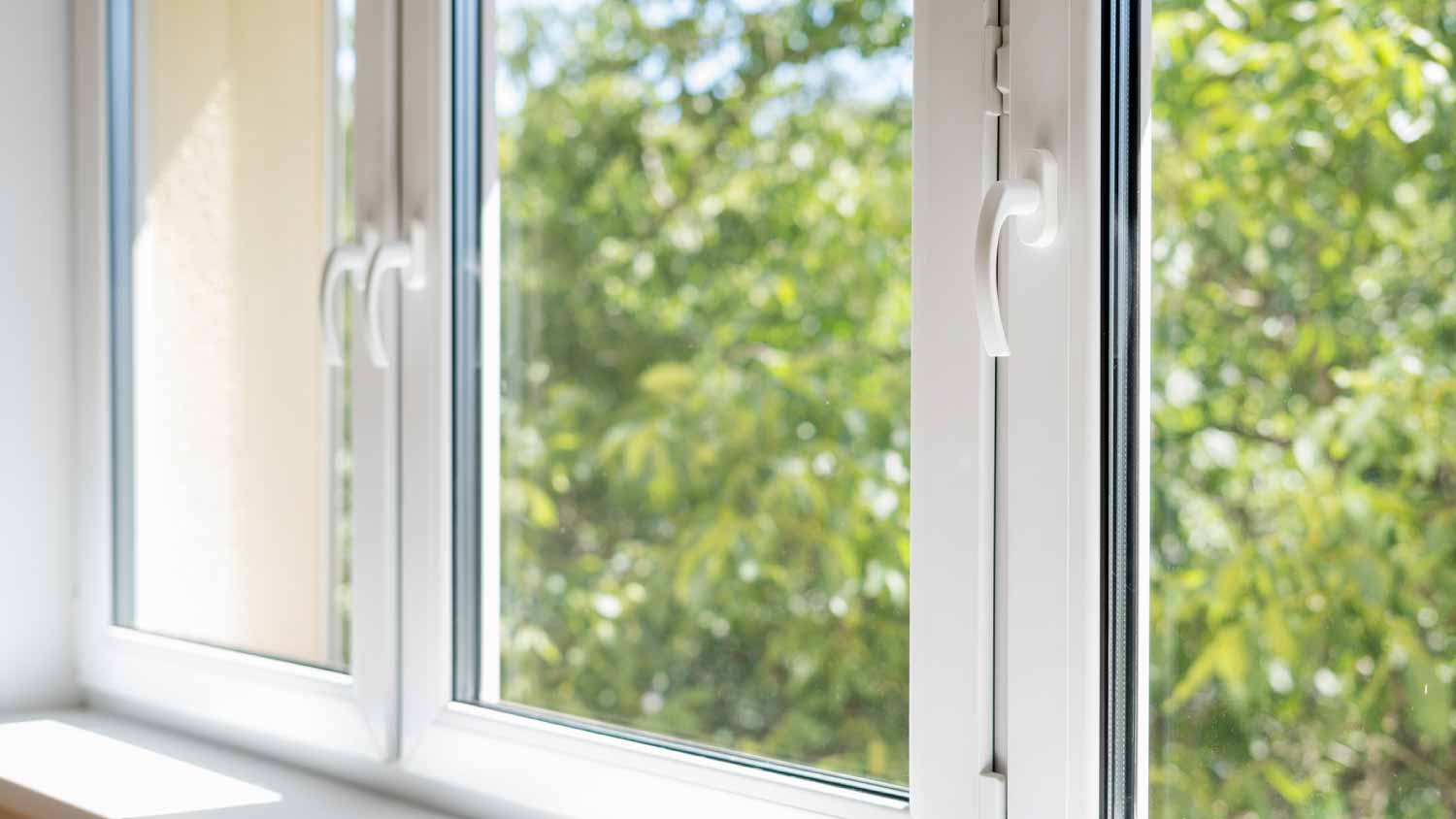
Garden windows can be a great addition to your kitchen, adding light and a place to grow plants. Costs depend on material, size, and customization—learn how much you can expect to pay.
Energy-efficient windows cost $400 on average, with homeowners paying an average of $325 to $2,000 per window. Main cost factors include window size, material, and installation complexity.


Energy-efficient window costs vary according to window size, material, and glass type.
Energy-efficient windows can lower utility bills and boost comfort.
Ranging from $40 to $90 per square foot, professional installation ensures optimal performance and warranty coverage.
Upgrading windows may increase home value and curb appeal.
Rebates and incentives can help offset energy-efficient windows cost.
This article was created using automation technology and thoroughly fact-checked and edited by an Angi Editor in accordance with our AI policy.
Energy-efficient windows cost an average of $400 per window, with an average range from $325 to $2,000, depending on size, material, and features. Homeowners can expect to pay $40 to $90 per square foot for premium options. Upgrading to energy-efficient windows can reduce energy bills and improve home comfort.
Choosing the right energy-efficient windows protects against drafts, saves on monthly expenses, and enhances your living space. This guide will walk you through what to expect, main cost factors, and how to get the best value for your investment.

The size of your windows plays a major role in energy-efficient windows cost. Standard window sizes are more affordable, while custom or oversized windows increase both material and installation expenses. Larger windows require more glass and frame material, which drives up the total price. Even small windows can have similar labor costs to larger ones, since the installation process and minimum fees remain consistent.
Specialty shapes, such as bay, bow, or picture windows, cost more due to their complexity and the need for custom manufacturing. When planning your upgrade, consider whether you need custom dimensions or can use standard sizes to help manage your budget.
| Window Size (in.) | Average Cost per Window |
|---|---|
| 24x36 | $400–$3,000 |
| 28x48 | $400–$1,200 |
| 48x60 | $450–$1,500 |
| 72x60 | $1,000–$6,000 |
The type of window you choose significantly affects energy-efficient windows cost. Popular options include single-hung, double-hung, casement, sliding, awning, picture, bay, bow, garden, and custom shapes. Each type varies in both price and suitability for energy efficiency upgrades.
Double-hung and casement windows are often chosen for their balance of performance and affordability. Bay, bow, and specialty windows command higher prices due to their size and complexity. Custom shapes can be tailored for unique spaces, but expect a premium for both materials and labor.
| Window Type | Average Cost | Pros | Cons |
|---|---|---|---|
| Single-hung | $300–$1,500 | Simple, affordable | Less ventilation |
| Double-hung | $400–$2,000 | Easy to clean, good airflow | Slightly higher cost |
| Casement | $500–$1,200 | Excellent seal, efficient | Needs clearance to open |
| Sliding | $450–$2,000 | Smooth operation | Less airtight than casement |
| Picture | $450–$1,500 | Maximum light, modern look | Does not open for ventilation |
| Bay | $2,000–$6,500 | Adds space, curb appeal | Expensive, complex installation |
| Bow | $2,000–$6,000 | Elegant, panoramic view | Most costly, space required |
Where you live impacts energy-efficient windows cost. Labor rates are higher in urban areas and regions with a higher cost of living. Material and transportation costs also fluctuate based on proximity to suppliers and climate conditions. Homes in colder climates may require windows with advanced efficiency ratings, which can affect price. Local building codes and permitting requirements can add to your total project cost.
Several factors influence the total energy-efficient windows cost. Understanding these will help you plan your budget more accurately.
Professional installation is essential for ensuring your new windows perform as intended and maintain their warranty. Window contractors, general contractors, or specialty installers handle this work. Hiring a window contractor ranges from $100 to $300 per window or $50 to $65 per hour. Factors like window accessibility, number of stories, and removal of old windows can increase labor costs. Market demand and regional labor rates also play a role. Proper installation prevents leaks and ensures energy savings.
Permit requirements for window installation vary by municipality or homeowners association (HOA). Many areas require permits for full window replacement, especially if structural changes are involved. Inspections may be required to ensure code compliance, which can add to your overall cost.
Upgrades can significantly increase energy-efficient windows cost. Popular options include:
Triple-pane glass
Low-E (low-emissivity) coatings
Gas fills like argon or krypton for improved insulation
Impact-resistant glass
Custom finishes
Decorative grilles
Integrated blinds or shades
Smart window technology
Enhanced security features
Project complexity can drive up costs, especially for multi-story homes, historic properties, or unusual window shapes. Accessibility challenges, such as high windows requiring scaffolding, result in higher labor fees. Site preparation may include removing and disposing of old windows, repairing frames or sills, and addressing rot or water damage. Delivery fees can apply for large or custom orders. Post-installation cleanup, design consultation, and inspection for code or energy certification may add further expenses.
Upgrading to energy-efficient windows involves more than just the initial purchase and installation. Here are some extra costs you may encounter.
Energy-efficient windows often include manufacturer warranties covering defects in materials for 10 to 20 years. Installer warranties may cover workmanship for one to five years, and extended or upgraded warranties add costs. Always review what’s covered and what’s excluded, such as accidental damage or improper use.
One of the biggest benefits of energy-efficient windows is reduced heating and cooling bills. Homeowners often see a 10% to 30% reduction in energy costs. The payback period for your investment ranges from five to 15 years, depending on local utility rates and the number of windows replaced. Rebates or tax credits can help shorten this period.
Maintenance costs vary by window material. Vinyl and fiberglass windows require minimal upkeep, while wood frames need periodic painting and sealing. Expect to spend $50 to $150 each year on cleaning, caulking, or minor hardware replacements. High-quality windows can last 20 to 40 years with proper care. Replacing seals or glass units over time may cost $100 to $300 per window.
State and local sales tax applies to both materials and installation in many areas, ranging from 5% to 10% of your total project cost. Some states offer tax incentives for energy-efficient upgrades, reducing your overall expense.
Homeowners insurance does not cover window replacement for routine upgrades. However, installing impact-resistant windows in hurricane-prone areas could lower your premiums. Always check your policy and local requirements to see if certain window types are required or incentivized.
Some homeowners consider installing energy-efficient windows themselves to save on labor. DIY material costs range from $250 to $700 per window. Skipping professional installation can save $100 to $300 per window, but you’ll need the right skills, tools, and equipment. Improper installation risks air leaks, water damage, and voided warranties, which can outweigh initial savings.
A DIY window replacement may take several hours per window, especially for first-timers. Complex window types and multi-story homes are best left to professionals. For most homeowners, hiring a pro ensures the job is done right and keeps warranty coverage intact.
Deciding whether to repair or replace windows depends on the condition and age of your current units. Minor seal failures, hardware issues, or small window cracks can often be repaired for $100 to $400 per window. If your windows have major frame damage, extensive rot, or outdated efficiency features, replacement is recommended.
If your windows are under warranty, repairs may be covered at little or no cost. Consider the 50% rule—if repair costs approach half the price of new energy-efficient windows, replacement is the smarter long-term investment. Modern energy-efficient windows also offer a longer lifespan and greater comfort.
Investing in energy-efficient windows often pays off in both direct and indirect ways. The return on investment for window upgrades falls between 60% and 75%. New windows can make your home more attractive to buyers, boosting resale value and curb appeal. Compared to other improvements like new doors or insulation, window replacements rank high for both ROI and energy savings.
Benefits extend beyond financial gains, including improved comfort, better noise reduction, increased security, and a more modern appearance. Energy-efficient windows can also appeal to buyers looking for sustainable, low-maintenance homes.
There are practical ways to save on energy-efficient windows cost without sacrificing quality or performance:
Maximize rebates and incentives: Research available rebates from federal, state, or local utility programs. Many energy-efficient windows qualify for tax credits, which can lower your out-of-pocket expenses. Keep documentation of your purchase and installation to apply for these benefits.
Choose cost-effective materials: Vinyl windows offer the lowest upfront cost and require little maintenance. Fiberglass is more durable and energy-efficient, but slightly more expensive. Wood provides classic beauty but demands higher maintenance and cost. Composite frames balance performance and price.
Get multiple quotes: Compare detailed estimates from several contractors. Look for clear breakdowns of labor, materials, and warranty coverage to identify the best value and avoid hidden fees.
Schedule installation during off-peak seasons: Plan your project in the off-season when contractors are less busy. This can lead to better pricing and more flexible scheduling.
Choose simple designs: Opt for standard window sizes and avoid custom shapes to keep material and labor costs lower.
Bundle services: Bundle window replacements to qualify for volume discounts from suppliers or installers.
Practice proper upkeep: Maintain your windows with regular cleaning, caulking, and inspections to maximize their lifespan and delay costly replacements.
Home is the most important place on earth, which is why Angi has helped more than 150 million homeowners transform their houses into homes they adore. To help homeowners with their next project, Angi provides readers with the most accurate cost data and upholds strict editorial standards. We extensively research project costs to develop the pricing data you see, so you can make the best decisions for you and your home. We rely on reputable sources, including the U.S. Bureau of Labor Statistics, academic journals, market studies, and interviews with industry experts—all to ensure our prices reflect real-world projects.
Want to help us improve our cost data? Send us a recent project quote to [email protected]. Quotes and personal information will not be shared publicly.
From average costs to expert advice, get all the answers you need to get your job done.

Garden windows can be a great addition to your kitchen, adding light and a place to grow plants. Costs depend on material, size, and customization—learn how much you can expect to pay.

Find out the cost to replace weatherstripping. Learn about material and labor costs, cost-saving tips, and what impacts your total price.

Single, double, or cottage-style, the cost of casement windows is worth it for their versatility alone. Let's look at casement window costs plus installation.

Whether you want protection from the elements or easy curb appeal, use our guide to learn how to build a wood awning frame for your exterior doors and windows.

There are seven types of casement windows most commonly used in homes, including single, double, push-out, and more. Read this to learn about each type.

Find out how much it costs to install vinyl windows in a single room or throughout your house—and see how the size and style of the windows impact the overall price.